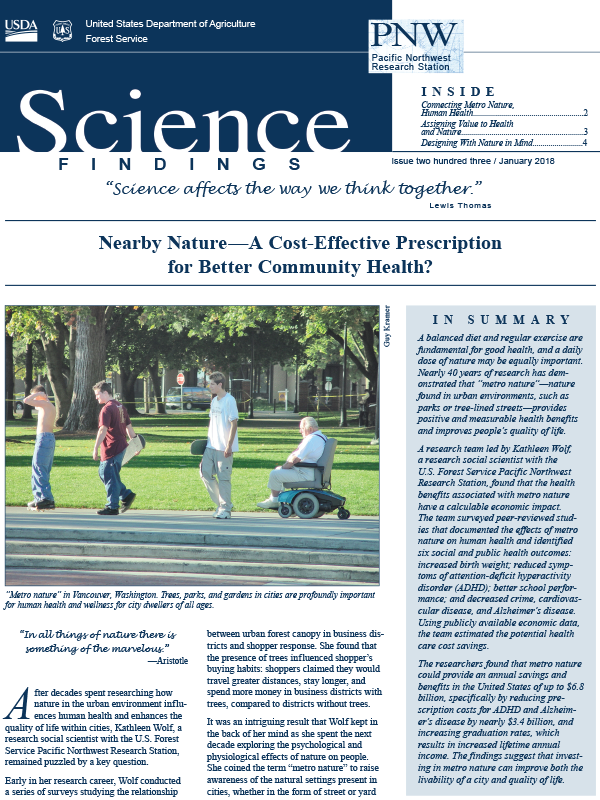Report
Nearby nature—A cost-effective prescription for better community health?
Publication Date:
A balanced diet and regular exercise are fundamental for good health, and a daily dose of nature may be equally important. Nearly 40 years of research has demonstrated that “metro nature”—nature found in urban environments, such as parks or tree-lined streets—provides positive and measurable health benefits and improves people’s quality of life.
A research team led by Kathleen Wolf, a research social scientist with the U.S. Forest Service Pacific Northwest Research Station, found that the health benefits associated with metro nature have a calculable economic impact. The team surveyed peer-reviewed studies that documented the effects of metro nature on human health and identified six social and public health outcomes: increased birth weight; reduced symptoms of attention-deficit hyperactivity disorder (ADHD); better school performance; and decreased crime, cardiovascular disease, and Alzheimer’s disease. Using publicly available economic data, the team estimated the potential health care cost savings.
The researchers found that metro nature could provide an annual savings and benefits in the United States of up to $6.8 billion, specifically by reducing prescription costs for ADHD and Alzheimer’s disease by nearly $3.4 billion, and increasing graduation rates, which results in increased lifetime annual income. The findings suggest that investing in metro nature can improve both the livability of a city and quality of life.
